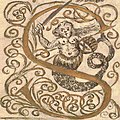
![The coat of arms of Old Warsaw is located on the cover of the book "Regestrum proventuum et expensorum civitatis antiq [ue] varsaviae" from 1652 AGAD Herb Warszawy 1652.png](http://upload.wikimedia.org/wikipedia/commons/thumb/e/ea/AGAD_Herb_Warszawy_1652.png/250px-AGAD_Herb_Warszawy_1652.png)





The Mermaid of Warsaw (Polish : Syrenka Warszawska) is a symbol of Warsaw, represented on the city's coat of arms as well as in a number of statues and other imagery.
Contents
- Etymology
- Origin
- The legend of the Warsaw mermaid
- Monuments and carvings of the Warsaw mermaid
- The Old Town Market Place
- Powiśle
- The Markiewicz viaduct
- The Sejm
- Inżynierska Street
- Katowicka Street
- Grochowska Street
- The Palace of Culture and Science
- Outside Warsaw
- Gallery
- See also
- References
- External links









